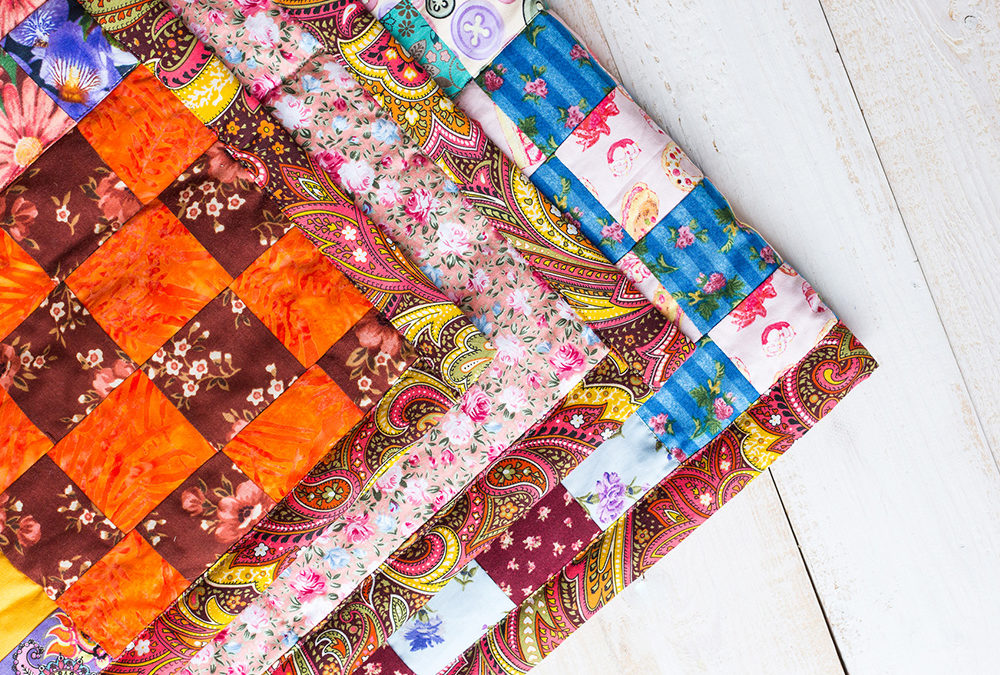Using Starch for Quilting
When you are dealing with 1/4” seam allowances, you know that quilting is a precise craft. Which is why wobbly, stretchy fabric can cause big headaches, even on small projects. But there is a solution that will keep your fabric in place while you work, and that’s spray starch. You have probably thought of, or used, spray starch on your clothing, but its uses go far beyond that. Spray starch for quilting can be your secret tool for award-winning quilts.
Spray Starch for Quilting
Starch your fabric before you cut out your pieces to help stabilize the fabric and prevent it from stretching. This results in more accurate piecing.
Begin by pre-washing and drying your fabric as you usually do. Then starch your fabric in layers. You only need to use a little bit on each layer. Plan to starch your fabric 2-3 times on each side.
Once your fabric is starched, you can iron it. Always use a dry, hot iron, set to medium-high heat, and no steam. Ideally, your iron should be 1600 watt or more. Remember to put the side of the fabric you sprayed with starch down toward the pressing board. You will be pressing the dry side of the fabric with the iron.
Your pressing board, or table, should be harder than a standard ironing board. A soft ironing board will cause issues when trying to press your fabric. Don’t worry about getting starch on your pressing board while you are working.
When you are pressing your fabric, press your iron. Don’t rub or move the iron too quickly or too roughly. Don’t worry about how the fabric feels at this point. You are looking to create stiffness with your fabric. The starch will wash out when you wash the final quilt and become softer.
Quilting Techniques
Different types of quilts will require different starching and pressing combinations. If you already have some small pre-cut pieces, these can be starched as well. You will need to take extra care to gently press them so that they do not become distorted or stretched during pressing.
For patchwork quilts, you can use starched fabric for gridded half-square triangles. The fabric will be more stable for easy marking. In appliqué quilting, you can lightly mist the starched patch with water before ironing the turn-under allowance over the template.
For pieced quilts, you can starch each block when finished. Simply spray starch lightly on the back side only. Also, remember when you are pressing a finished block, be sure to pay close attention to the seams. Seams that were all pressed open need to stay pressed open.
When it comes to finishing quilts, there are a few more things to keep in mind. If you are basting, pins need a bit more push to slide through starched fabric. Quilting by machine is best for a quilt top of starched fabric. Hand quilting is difficult through starched fabric.
Spray Starch Suggestions
Starch only as much fabric as you will be working with in the near future. Try to avoid storing starched fabrics for long periods of time. After pressing, you can roll the starched fabric on a cardboard tube to avoid folds.
Starching is an easy way to tame your fabric when you are quilting. It keeps your fabric from wobbling and stretching which allows patches and blocks to keep their shape. And after your quilt is assembled the starch will wash out when the quilt is laundered. Hang up your finished quilt and get ready for admirers to ask you for your precision quilting secret.
We know the time and care you put into your quilted pieces. That’s why Oxford & Wells is proud of our fine care products that are made with premium natural ingredients. You can trust your hard work to our products that are as good for the environment as they are for your clothes. Visit our website for more information.
